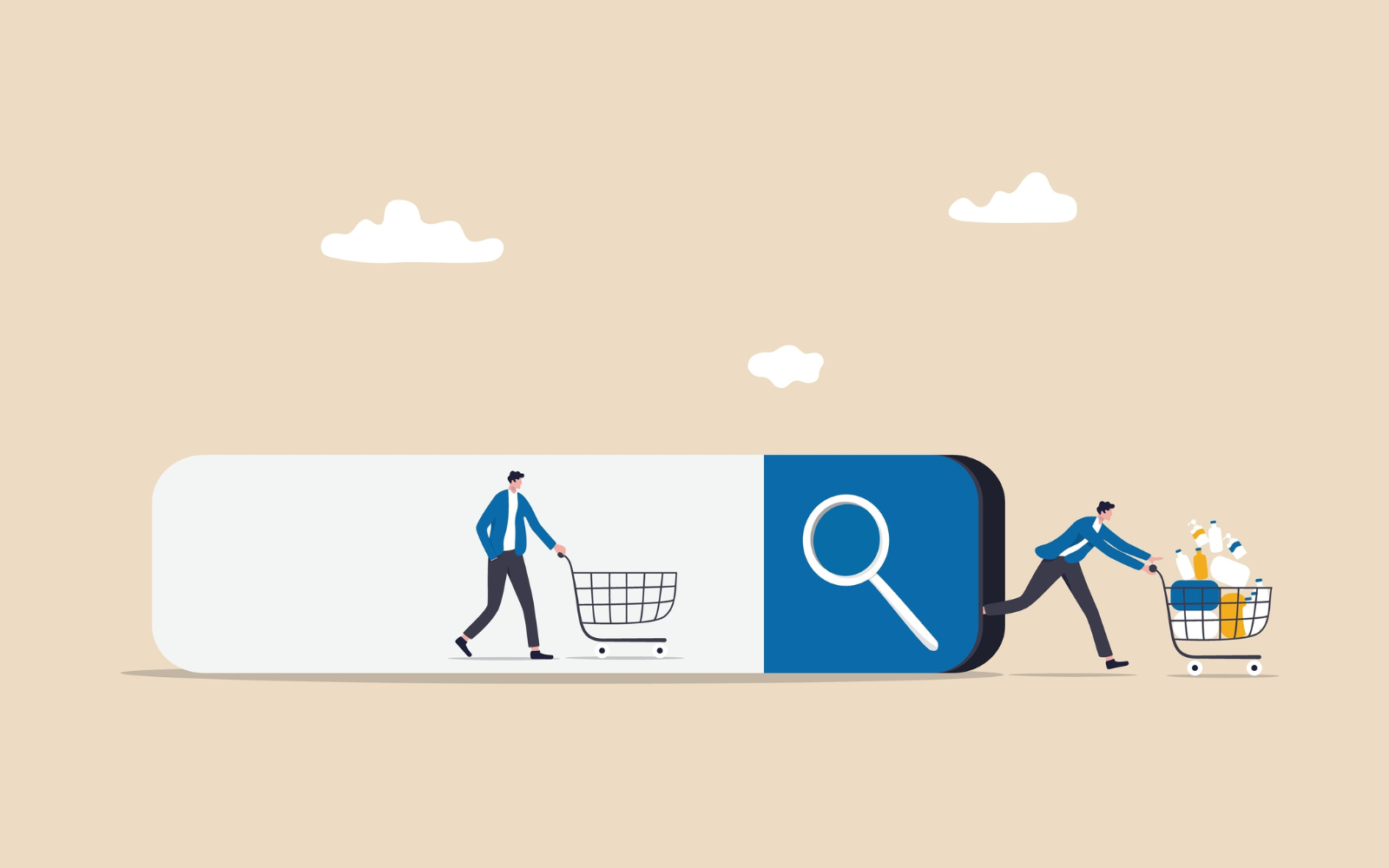This week’s Ask an SEO question comes from Arpit, who asks:
“How do I optimize SEO conversions on non-branded search terms?”
Great question! This one is all about meeting user needs and modifying your copy or the page experience at the current step in the consumer journey.
And it applies to both B2B and B2C.
In some cases, you’ll need to use a multi-channel approach. The good news is it is a pretty easy one to solve.
The first step is to evaluate what the intent of the visitor is. Consider whether they are:
- In the research phase.
- Mid-funnel and choosing between products or vendors.
- Ready to convert but not ready to pull the plug.
In The Research Phase
Someone just researching solutions hasn’t decided if they’re ready to convert yet. So make sure you have remarketing pixels ready to tag them.
Remarketing is vital here because there is an interest in a product or service you provide.
By tagging them, you can bring them back once they’re ready to convert and share new content to help educate them during their journey. This is especially important with large and B2B purchases.
Pro-tip: PPC likely has the lifecycle timestamp and channel touchpoints if they’re tracking lifecycle customer data.
Remarketing includes email and SMS opt-ins, social media, PPC, and media planning or ad buys. And there’s a huge benefit to these channels from your SEO efforts.
Your company can save PPC money on low-intent but topically relevant keywords by having you rank for them and get the clicks for a new customer at a fraction of the cost.
The PPC, ads, and social media teams can work with your SEO top-funnel traffic to drive the conversion as the lead warms. Make sure they report back on this touchpoint so that all channels win in company-wide reporting.
Cold leads are an important part of the consumer journey and acquisition campaigns.
This even applies to medical needs like plastic surgery, large purchases like SaaS solutions and data centers, and corporate trip planning.
What we do with clients that have this problem is create thought leadership and educational content to build trust for the research phase.
By becoming a “trusted resource” or “authority” on the subject, we begin building a relationship with them mentally and a positive association with our brand.
By having educational content show up for each question they have, we have the opportunity to earn their trust as a company that really knows the topic.
This way, when they decide it is time to pull the plug, they may come to our sales page directly or see our remarketing ads and convert through them.
Either way, it is about meeting the user’s needs at each step of their journey.
Mid-funnel
Someone mid-funnel could be looking for comparisons or to solve a problem – like changing a water heater tank or learning how to do a pull-up.
If you’re taking them to a product page, they may not need the product yet. Instead, take them to demonstrations with a video or a written guide with step-by-step instructions to complete the task.
This way, they can see the solution with their own eyes and know you’ve been there and solved it before.
I’ll use the water tank as an example here.
By showing multiple standard sizes and where they fit in a room via images and video, you can help the person visualize the size they need vs. what they thought they needed.
You can explain how many minutes of hot water it can produce or answer other questions they might ask – and even those they haven’t thought of yet.
This builds trust while showing experience in their situation.
Next, demonstrate how to install it in case the user is a DIYer. This can be done on the same page, or you can lead them to a new one.
The benefit here is you can highlight which tools are needed and link to those product pages to increase your order value and items in a cart.
These are two metrics we report on with some clients. If it turns out to be too hard for them or intimidating, close the content out with a call to action to hire your company to do it for them.
Pro tip: If you are a local business and cannot offer nationwide services, sell the leads to a trusted third party.
Or let the consumer know that you do not service their area, but XYZ company does, and use an affiliate link (with an advertising disclosure) to provide a resource and ask the person to subscribe to your channel.
I have this guide to finding an affiliate program you can make money with and this one to getting started in affiliate marketing.
Ready To Convert But Didn’t Pull The Plug
This is the tricky one. You could have a “high-intent” keyword that isn’t converting as it should.
There are a couple of places I start here; these can fix a large portion of the conversion issue.
Option 1
Crawl and index your customer service conversations, then extract all that have the product or service mentioned.
Next, look for common questions and see if your product or service page explains you do offer them. If not, update your page as soon as possible.
Option 2
Use abandonment intent pop-ups to ask potential customers why they’re leaving. It may be you’re priced too high, or they don’t understand you actually provide the solution.
- If priced too high, work on trust builders like money-back guarantees, positive reviews, educating the audience on quality over discounts, or work on your pricing if you have a margin.
- When the copy doesn’t reflect you provide a solution, add it to your copy to answer the question. You could do an FAQ or place it within the product description above the CTA if enough people mention it.
- You can also work on getting PR mentions in industry and mass media websites. The logos on PR bars can increase trust and conversions in many niches.
Pro tip: If customers are not sure the product will fit, work, match (color, theme, size, etc…), or solve a problem, you may need to create a demonstration and guide content vs. optimizing a product page.
And try adding the uses to the product copy above the call to action.
Wrapping Up
The trick to converting non-branded search traffic is to find out what was missing from your current consumer or lead process and add it in.
If that doesn’t work, discover what step of the customer journey the person is in and bring them to the right experience.
And that is how you can convert non-branded SEO keywords into paying customers.
I hope this guide helps, and thank you for reading.
CRO is one of my favorite types of projects. Thank you for asking this one!
More resources:
- Feature Page SEO For SaaS: Non-Branded Keywords For Organic Traffic
- Branded vs. Non-Branded Traffic: What’s the Difference?
- How to Do Keyword Research for SEO: The Ultimate Guide
Featured Image: eamesBot/Shutterstock





